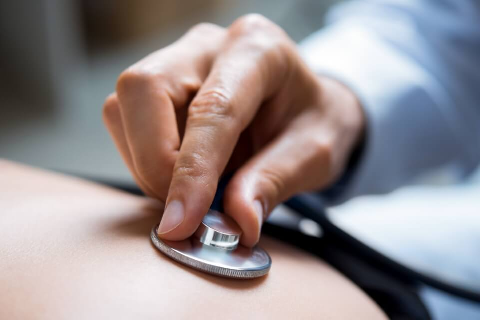- Home >
- Heart and Cardiac Negligence Claims
The heart is the most important muscle in the body. When something goes wrong with it, prompt and professional treatment is essential. If you or someone you know was let down by a medical professional when receiving cardiovascular treatment, you may have the right to justice.
As legal experts with over 30 years of experience in clinical negligence, we can guide your claim with professionalism and compassion. Working tirelessly to evaluate every aspect of your case, we help you secure the answers, justice and compensation you need to move on from this incident.

Do you have a heart and cardiac medical negligence claim?
Even when healthcare professionals do all they can to care for patients with heart conditions, recovery or survival is sadly not always possible. But when the pain, suffering or loss of a loved one is due to inadequate care, it can feel impossible to move forward without answers.
Whether the result of heart surgery errors, inattentive monitoring or a medical misdiagnosis, our solicitors will investigate what went wrong, pursue compensation, and provide peace of mind across the claims process.

The specialist heart and cardiac claims solicitors for Essex & East Anglia
Cardiology negligence can have severe outcomes, from long-term health issues to brain damage or even loss of life. Whatever the impact on you or your family, we have guided individuals and their loved ones through heart negligence claims with care and compassion since 1993.
Working on a strict ‘no win, no fee’ basis, we take every step to help you navigate these complex cases, thoroughly investigating all available evidence. By leaving no stone unturned, we recover millions in compensation for our clients every year, and resolve 96% of our claims outside the courtroom.
What does our heart and cardiac medical negligence claim process look like?

A free initial consultation
Call us, request a callback or complete our online form and we’ll assess if you have a valid medical negligence claim.

Funding your claim
Discover the ways we can fund your claim without you paying a penny at any stage of the process.

Investigating evidence
We gather medical records, witness statements and more to learn what happened to you and prove your claim.

Instructing independent medical experts
We work with impartial, experienced medical experts to establish whether your injuries were due to substandard medical care.

Valuing your claim
We assess your health and financial losses to accurately estimate how much compensation your claim is worth.

Presenting your case
We contact the Defendants and the Courts on your behalf to set out your allegations and receive a response.

Negotiating a settlement
We work to achieve a fair settlement for you outside the courtroom – this is how 96% of our cases end.

Preparing for Trial
If we must proceed to Trial, we fully prepare you for what to expect so you receive the right result in court.
FAQs about heart and cardiac negligence claims
What is heart and cardiac negligence?
Heart problems are one of the most common causes of death and disability in the UK, resulting in approximately 170,000 deaths every year. Although the vast majority of healthcare professionals take good care of patients affected by cardiovascular issues, mistakes can happen. When they do, the consequences can be just as grave, from long-term injury and disability to sadly even death.
In the rare instances a medical professional breaches their duty of care, affected individuals or their family members can seek compensation for heart negligence. This can compensate for any financial losses caused by time off work, pay for ongoing health and wellbeing support, and more.
To prove negligent treatment was to blame for the unexpected outcome of you or your loved one’s procedure, our solicitors meticulously investigate every piece of evidence and consult impartial medical professionals. Our findings can help you understand what happened, secure compensation, and prevent similar mistakes from occurring to others in the future.
What are common examples of cardiac negligence?
When you or someone you know receives substandard heart care, it can lead to a variety of injuries and unfortunate outcomes. These breaches can occur in many ways, but some of the most common examples include:
Misdiagnosis of heart conditions
In some cases, a doctor, GP or other trained medical professional may fail to diagnose something like a heart attack. This could mean the wrong procedures are taken and opportunities to treat the condition early are missed, increasing the likelihood a patient suffers cardiogenic shock, heart failure or another potentially fatal condition.
Delayed treatment
Due to the seriousness of many heart problems, speed is essential. However, if avoidable delays slow the response to a cardiac arrest, myocardial infarction or similar issue, this may also be grounds for an individual or their family to pursue a cardiac compensation claim.
Surgical errors
Delayed surgery, wrong site surgery, or the substandard technique of a surgeon, anaesthetist or other healthcare professional are further potential examples of cardiac negligence.
View our National and Essex Medical Negligence Statistics post for more industry insight.

What health problems can cardiac negligence cause?
Any form of heart disease is serious. As a result, any mistakes in diagnosing or treating these issues can be fatal or lead to long-term medical conditions, such as:
- Sudden cardiac arrest (ventricular arrhythmia)
- Other forms of arrhythmia, whose symptoms can range from mild to life-threatening
- Aortic aneurysm
- Complete heart block
- Heart failure
- Cardiogenic shock
- Heart rupture
How do you prove medical negligence occurred during cardiac care?
If you believe substandard care was to blame for you or your loved one’s outcome, we will work hard to establish three key factors in your heart negligence compensation claim:
- There was a breach of your healthcare provider’s duty of care
- You suffered pain, injury, financial loss or damage
- Your suffering was directly caused by your healthcare provider’s breach of duty
Proving these elements is fundamental to any successful case, as all medical negligence claims are determined on the Balance of Probabilities. This means you must prove that it is more likely your injuries were caused by the Defendant’s negligence than not.
As part of this process, our specialist medical negligence solicitors will gather and assess all available evidence connected to your claim, including medical records, personal statements, photographs and more.
We will also consult relevant, impartial medical experts during your case. This will help us determine whether a healthcare professional breached their duty of care, and quantify the impact of negligence.
Learn more about how we pursue and prove medical negligence cases on our dedicated legal claims process page.
How much compensation can I claim for heart negligence?
Every heart and cardiac clinical negligence claim is unique. As a result, the final settlement you receive will vary depending on the specifics of your case – such as the extent of the injury caused and its long-term ramifications.
We understand compensation will never be able to make up for the pain and suffering you or your family endured – especially if negligence sadly resulted in the loss of a loved one. However, the money recovered can pay for ongoing treatments, funeral arrangements and other helpful aids.

What is the time limit for filing a cardiac compensation claim?
In most heart negligence claims, you or your loved one has three years from the date of their injury, or the date they became aware of their injury, to launch a claim. However, there are exceptions to this rule:
- If the claimant is under the age of 18, they have until their 21st birthday to start their claim
- If the claimant is considered mentally incapable, there is no time limit
In the event a claimant sadly passes away before completing their case, the three-year period resets from the date of their death.
Sometimes, the courts will allow claims outside of this period. We can advise whether your case is likely to be considered.
Contact our expert heart and cardiac claims solicitors
If you or someone you care about has been affected by cardiac negligence, speak to someone about your options. Our team is here to listen and advise you on your next steps.

Lexcel accredited medical negligence claims solicitors
We are proud to be a Lexcel-accredited practice. The accreditation is a mark of quality and comes directly from the Law Society.
A recent assessment described us as a “Centre of Excellence” and we continue to operate to the highest standards across all main areas of our field. These include client care, case management, financial management, structure and strategy, people management, risk management, information management and file management.






